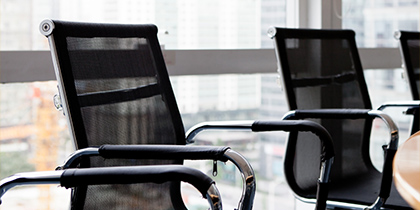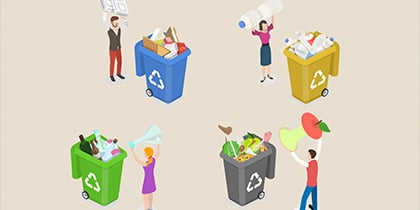How you handle waste as a company is becoming increasingly important. Stricter regulations, such as the CSRD directive, require companies to report in outline how much waste they produce and what steps they take to reduce or better separate it. At the same time, more and more companies have a sustainability ambition, in which waste reduction and circularity play a clear role.
A logical first step in improving waste management is to install waste separation bins. But to what extent does this actually separate waste properly? In practice, this is often not the case.
To change this, a change in behavior is needed.
In this blog you will read what behavioral change means in dealing with waste, how it relates to awareness and how you as an organization can encourage the right behavior on the shop floor.
What is the difference between awareness and behavior change?
In practice, awareness and behavior change are often used as synonyms. Yet they are two different concepts.
Awareness is about knowledge. This is about raising awareness among employees on the shop floor. Knowing why waste separation is important, what happens when waste is thrown away incorrectly, and what belongs where. A common way to encourage this is to place posters at waste points with a clear explanation. This helps employees know better what belongs in which bin.
Behavior change goes a step further: it's about what people actually act upon. It's not just about understanding how to separate waste, but actually applying it. Often this happens automatically, under time pressure or without thinking. At that moment the environment plays a major role: where is the bin, how logical is the layout and how easy is it to make the right choice?
Both elements reinforce each other. Where awareness provides knowledge and motivation, behavioral change translates that insight into concrete actions on the shop floor.
How do you influence the right separation behavior?
We recently investigated this among a group of students who started working with waste separation at Milgro. Participants were given a bag of waste and tested three different setups. While they made choices, we observed the behavior: where did they separate with ease? What role did the type of bin play?
What emerged: the target group, Gen Z, is willing to separate waste, provided it's simple.
Complex terms such as 'PMD' and 'GFT' create confusion and evoke uncertainty about disposal. 'If I don't know, I just throw it in the residual waste,' we often heard from participants.
terms such as 'PMD' and 'GFT' create confusion and evoke uncertainty about disposal. 'If I don't know, I just throw it in the residual waste,' we often heard from participants.
Remarkably, although only 20% of young people described themselves as conscious and purposeful about waste separation, almost everyone made a serious effort to separate waste correctly. This shows: proper waste separation behavior can be encouraged.
In our guide we have compiled all these insights- valuable for institutions such as schools, care facilities and governments that want to improve waste separation. Download the guide for free and read on.
How do you encourage behavioral change around purchasing and use?
Separating waste is often the most visible moment when you can drive behavior. But behavioral change starts before that. Find out exactly how - including practical examples - below.
Behavioral change in procurement: preventing unnecessary waste
During the procurement phase, choices are made that directly influence the amount of waste created later. This requires different behavior of buyers: not automatically opting for the cheapest or most familiar option, but consciously looking for more sustainable alternatives with less packaging waste.
Also at Milgro we look at this critically. For example, everyone received a personalized mug to prevent the use of disposable cups in the workplace.

Read also

Hoe je afvalmanagement duurzaam inkoopt
Changing behavior during use: extend the life of materials
What happens after purchase is at least as decisive for the amount of waste created in the end. How carefully do employees handle products and materials? Are they replaced immediately in case of minor damage, or first repaired and reused?
A recognizable example is office chairs. These are regularly written off because of worn upholstery or a broken part, such as a broken armrest or a pump that no longer works. Instead of throwing these chairs away or taking them to a recycling center - with the chance that they will still end up in the waste - we at Milgro have opted for repair. This reduces the waste stream and avoids buying completely new chairs, saving valuable metals, plastics, and energy.
Read also

Zero Waste office: kantoorstoelen
Changing behavior at waste moments: prepare for reuse
Behavior before something is thrown away also plays a big role. Are materials kept separate for reuse or do they automatically end up in the bin? A recognizable example is groceries delivered to the office. Perishable products are often packed in individual bags. By keeping these neatly separated and returning them to the next delivery, suppliers can reuse them. This avoids unnecessary waste and extends their life.
Getting started with behavioral change on your shop floor?
During our Zero Waste Workshop, you and your colleagues will get to work actively. We literally dive into the waste bins and map out which waste streams are generated at your location. Where can you best separate them? That is the awareness part.
Then we make the step to behavioral change: how can you organize waste points in such a way that employees automatically make the right choice? That's behavioral change in practice.
Stay informed
Want to stay up to date with the latest developments? Follow us on LinkedIn and Instagram or subscribe to our newsletter. Curious about what Milgro can do for your operations and waste process? Feel free to get in touch .













